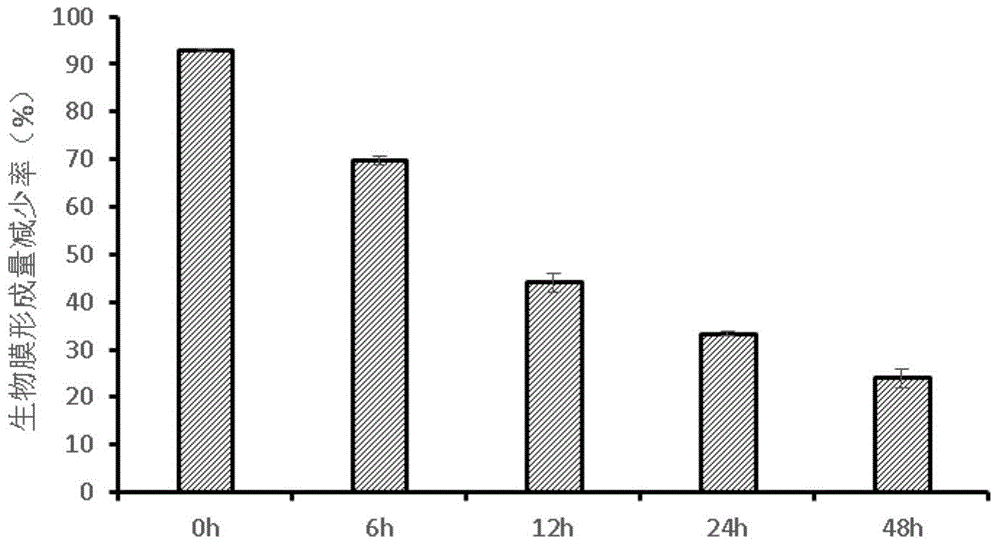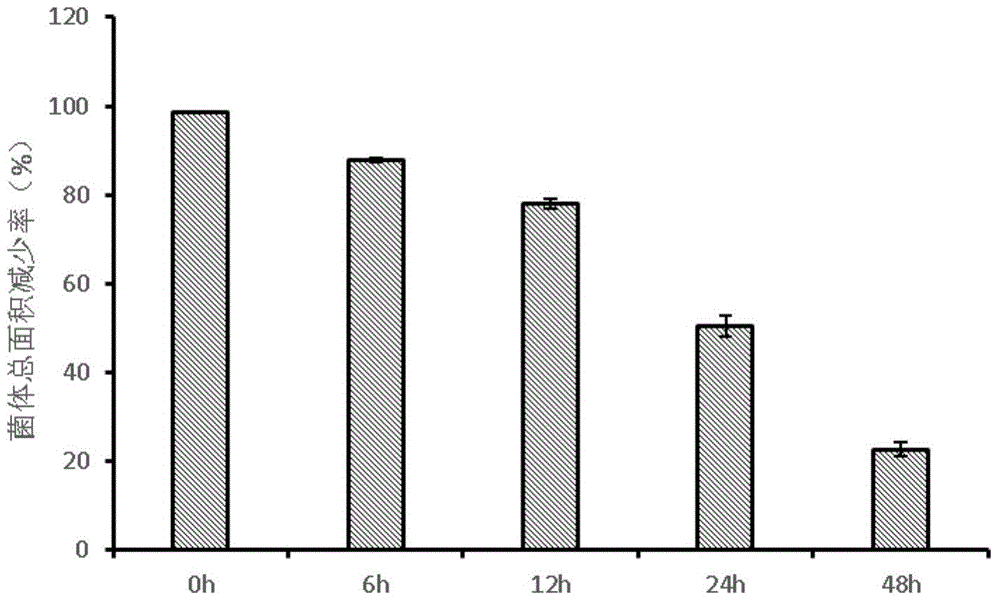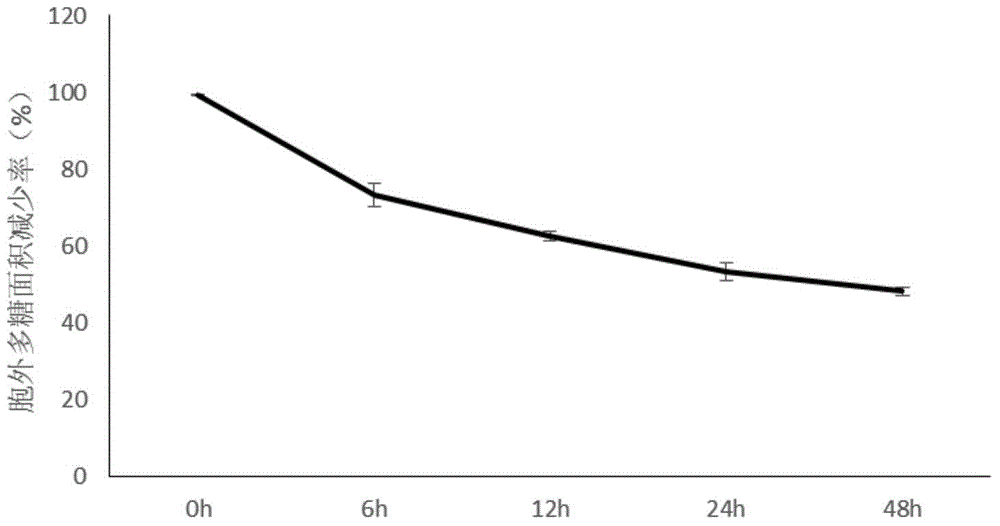Analysis method of rejection capability of lactobacillus plantarum metabolite and application of lactobacillus plantarum metabolite
A technology of metabolite inhibition and Lactobacillus plantarum, applied in the field of microorganisms, can solve the problems of biofilm inhibition of Streptococcus mutans without lactic acid bacteria, and achieve the effect of maintaining oral health
- Summary
- Abstract
- Description
- Claims
- Application Information
AI Technical Summary
Problems solved by technology
Method used
Image
Examples
Embodiment 1
[0020] Embodiment 1: Experiment of the inhibitory effect of metabolites of Lactobacillus plantarum FB-T9 on planktonic Streptococcus mutans
[0021] The Streptococcus mutans strain used in this example is ATCC 25175 (obtained from the Microorganism Collection Center, Chinese Academy of Sciences). The strain was cultured in Tryptone Soy Broth (TSBY) supplemented with 0.6% yeast extract. TSBY medium is well known to those skilled in the art, and it contains tryptone, soybean peptone, yeast extract, sodium chloride, glucose and dipotassium hydrogen phosphate, with a pH of 7.1-7.5. Streptococcus mutans cultivated overnight was adjusted to OD with fresh TSBY medium 600 0.5, the number of colonies is about 1×10 8 cfu / ml.
[0022]Inoculate Lactobacillus plantarum FB-T9 strain in MRS medium with 2% inoculation amount, and culture it statically at 37°C. At the end of the stationary phase, collect the culture solution, centrifuge at 12000rpm at 4°C for 20min, take the supernatant, an...
Embodiment 2
[0025] Example 2: Preliminary exploration experiment on antibacterial substances of Lactobacillus plantarum FB-T9
[0026] Take 1ml of the fermentation supernatant of lactic acid bacteria, and treat them in water baths at 37°C, 60°C, 80°C, and 100°C for 20 minutes respectively, set up a blank control, and test the antibacterial activity, so as to explore the effect of heat treatment on the activity of antibacterial substances; 1.0mol / L sodium hydroxide solution and 1.0mol / L hydrochloric acid solution respectively adjust the pH value of the supernatant to pH3.0, 4.0, 5.0, 6.0, 6.5, 7.0, take each 1ml of the adjusted supernatant, Filtrate and test the antibacterial activity, so as to explore the influence of pH on the activity of antibacterial substances; take four parts of lactic acid bacteria fermentation supernatant, adjust the pH to 8.0, 6.0, and 7.0 respectively, add trypsin, papain, and proteinase K in sequence, Make the final concentration 1mg / mL, bathe in water at 37°C f...
Embodiment 3
[0038] Example 3: Effect experiment of metabolites of Lactobacillus plantarum FB-T9 on biofilm formation of Streptococcus mutans
[0039] The formation of early dental plaque biofilm can basically be divided into bacterial colonization (0-6h), bacterial adhesion (6-12h), biofilm basic structure formation (12-24h) and mature biofilm formation (24-48h). these four main stages. Therefore in this embodiment, at the initial stage of the bacterial colonization stage (0h), the initial stage of the bacterial adhesion stage (6h), the initial stage of the formation of the basic structure of the biofilm (12h), after the formation of the basic structure of the biofilm (24h) and mature After the formation of the biofilm structure (at 48h), the metabolites of Lactobacillus plantarum FB-T9 were used to mediate.
[0040] (a) Effect on biofilm formation of Streptococcus mutans
[0041] Firstly, the bacterial concentration was prepared to be 1×10 5 cfu / ml of Streptococcus mutans suspension. ...
PUM
 Login to View More
Login to View More Abstract
Description
Claims
Application Information
 Login to View More
Login to View More - R&D
- Intellectual Property
- Life Sciences
- Materials
- Tech Scout
- Unparalleled Data Quality
- Higher Quality Content
- 60% Fewer Hallucinations
Browse by: Latest US Patents, China's latest patents, Technical Efficacy Thesaurus, Application Domain, Technology Topic, Popular Technical Reports.
© 2025 PatSnap. All rights reserved.Legal|Privacy policy|Modern Slavery Act Transparency Statement|Sitemap|About US| Contact US: help@patsnap.com



